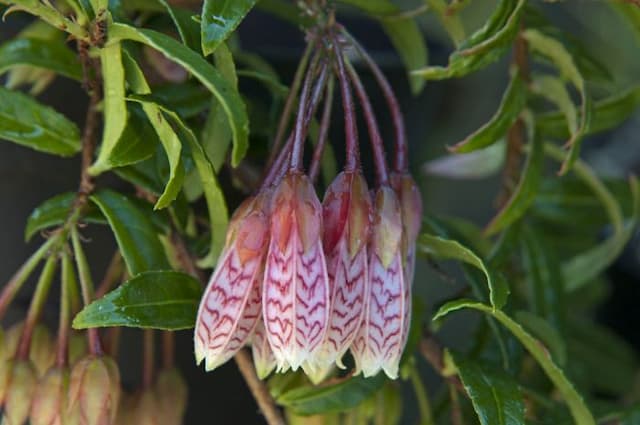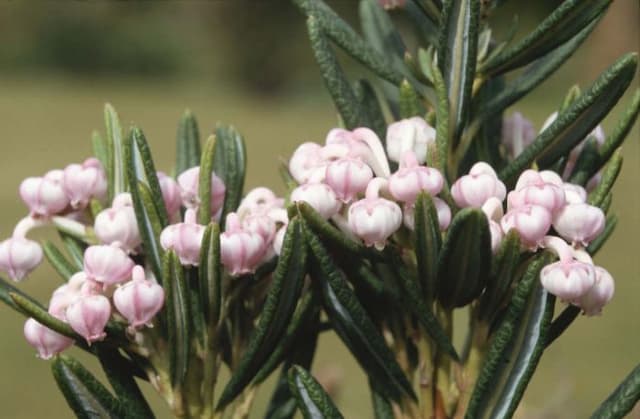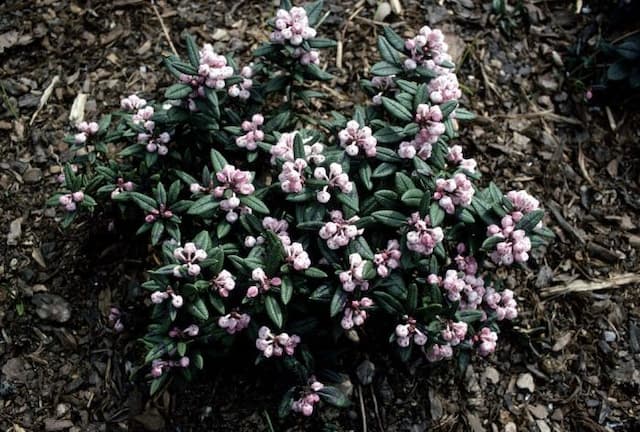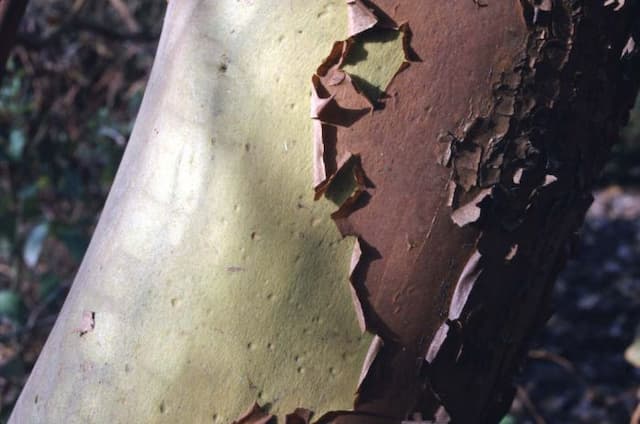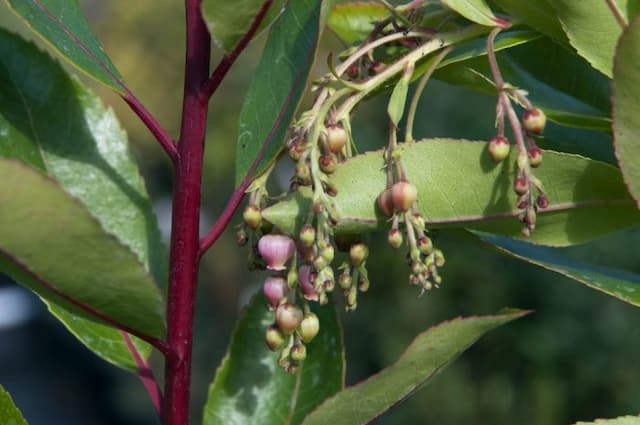Rhododendron 'Rosebud' (Ea/d)

ABOUT
Rhododendron 'Rosebud' is a striking flowering shrub known for its spectacular blooms. The plant produces lush, dark green leaves that provide a beautiful backdrop for the flowers. These leaves are typically leathery in texture and can have a glossy finish, which makes them eye-catching even when the plant is not in bloom. The true show-stoppers of this plant are the flowers, which are aptly named 'Rosebud' because they resemble small, compact roses before they fully open. The buds are typically a deep pink color and, as they open, reveal blossoms that are shaped like traditional roses. The flowers cluster together in large, globe-like trusses, creating a dense and vibrant floral display. Each individual flower is composed of multiple petals that form a tight, intricate whorl. The blooms are noted for their longevity and can provide a splash of color in the garden for several weeks. The whole display creates a romantic, classic aesthetic that makes Rhododendron 'Rosebud' a beloved choice for many garden enthusiasts. Its overall appearance emits a feeling of elegance and charm, fitting perfectly into ornamental gardens and landscapes looking to make a statement with an abundance of flowers.
About this plant
 Names
NamesFamily
Ericaceae
Synonyms
Rosebud Azalea
Common names
Rhododendron 'Rosebud' (Ea/d)
 Toxicity
ToxicityTo humans
Rhododendrons, including the 'Rosebud' variety, contain toxic compounds known as grayanotoxins. Ingesting any part of the plant can lead to rhododendron poisoning. Symptoms may include vomiting, diarrhea, drooling, weakness, loss of appetite, abdominal pain, and in severe cases, cardiac problems such as irregular heartbeats. Ingestion of large quantities could potentially lead to coma and be life-threatening, hence immediate medical attention is advised.
To pets
Rhododendrons are also toxic to pets, such as dogs and cats, due to grayanotoxins. If a pet ingests any part of a rhododendron, symptoms can include vomiting, diarrhea, hypersalivation, weakness, loss of appetite, abdominal pain, and potentially progressive depression of the central nervous system. Cardiac arrhythmias may also occur in severe cases, and without prompt veterinary treatment, the poisoning can be fatal.
 Characteristics
CharacteristicsLife cycle
Perennials
Foliage type
Evergreen
Color of leaves
Green
Flower color
Pink
Height
4 feet (1.22 meters)
Spread
4 feet (1.22 meters)
Plant type
Shrub
Hardiness zones
5
Native area
Asia
Benefits
 General Benefits
General Benefits- Ornamental Appeal: Rhododendron 'Rosebud' is prized for its attractive rosy-pink, double-flowered blooms that add beauty to gardens and landscapes.
- Seasonal Interest: It provides a vibrant display of spring flowers, offering seasonal interest to garden settings.
- Habitat for Wildlife: The plant can offer food in the form of nectar to pollinators such as bees and butterflies.
- Shade Tolerance: This variety is capable of growing in partially shaded areas, which makes it versatile for different garden designs.
- Soil Erosion Prevention: As a dense shrub, Rhododendron 'Rosebud' can help stabilize soil and prevent erosion on slopes or banks.
- Privacy Screening: When planted in groups, it can form an effective visual screen, providing privacy for gardeners and homeowners.
 Medical Properties
Medical PropertiesThis plant is not used for medical purposes.
 Air-purifying Qualities
Air-purifying QualitiesThis plant is not specifically known for air purifying qualities.
 Other Uses
Other Uses- Rhododendron 'Rosebud' can be used as a natural dye source for fabrics, giving a range of colors from yellows to greens, depending on the mordant used.
- The wood of the Rhododendron is sometimes used in woodworking for small projects, as it is known for its fine grain and ability to take polish well.
- Leaves of the Rhododendron may be used in the crafting of natural insect repellents, as they contain certain compounds that are unappealing to bugs.
- The flowers and leaves can be used in potpourri mixtures, contributing a subtle fragrance and distinct appearance.
- Rhododendron can be featured in educational spaces like botanical gardens, aiding in the teaching of plant biology and horticulture.
- The thick foliage serves as excellent cover for small wildlife in gardens, offering protection and nesting opportunities.
- As a subject in photography, Rhododendron 'Rosebud' offers stunning visuals for artists due to its rich colors and textures.
- Live Rhododendron plants may be placed strategically in landscapes as a natural erosion control measure on inclined grounds.
- During festive seasons, trimmed branches with blooms are sometimes used in floral decorations and arrangements.
- The plant can be used in bonsai culture, where its attractive flowers and foliage are pruned and shaped for miniature gardens.
Interesting Facts
 Feng Shui
Feng ShuiThe Rhododendron is not used in Feng Shui practice.
 Zodiac Sign Compitability
Zodiac Sign CompitabilityThe Rhododendron is not used in astrology practice.
 Plant Symbolism
Plant Symbolism- Beware: Rhododendrons, including the 'Rosebud' variety, have been historically associated with caution due to their toxic properties.
- Elegance: The delicate blooms and sophisticated form of the Rhododendron 'Rosebud' convey a sense of refinement and elegance.
- Abundance: With their lush, full clusters of flowers, rhododendrons symbolize abundance and wealth.
- Survival: As rhododendrons are hardy plants that can thrive in challenging conditions, they represent the ability to overcome adversity.
- Homecoming and Hospitality: In some cultures, rhododendrons are a welcoming symbol, representing homecoming and the hospitality of inviting someone into your home.
 Water
WaterRosebuds should be watered thoroughly, ensuring the root ball is moist. They prefer consistently moist soil, so water when the top inch of soil becomes dry. Typically, this means one to two gallons per week, but it may vary with climate and soil conditions. In hot weather, they may require water more frequently, and less often in cooler, damp conditions. Avoid overhead watering to prevent leaf and flower diseases, and water early in the day to allow foliage to dry.
 Light
LightRosebuds thrive in partial shade, with filtered sunlight or morning sun followed by afternoon shade being ideal. Direct afternoon sun can lead to leaf scorch, so it’s best to position them in a spot with dappled shade. North or east-facing locations are often well-suited for rosebuds, ensuring they receive the right amount of light without being exposed to harsh sun.
 Temperature
TemperatureRosebuds do best in moderate temperatures, ideally between 50°F and 70°F. They can survive minimum temperatures down to about 20°F, but prolonged exposure to temperatures below this can damage the plant. Summer heat above 80°F can also stress rosebuds, so they should be protected from extreme temperatures.
 Pruning
PruningRosebuds benefit from light pruning to remove dead flowers and promote bushier growth. Prune immediately after blooming since they set next year's buds soon after flowering finishes. Remove dead or diseased wood anytime, but the best time for shaping the plant is after flowering.
 Cleaning
CleaningAs needed
 Soil
SoilAzaleas such as 'Rosebud' thrive in well-draining, acidic soils with a pH of 4.5 to 6.0. A mix of 50% peat moss or acidic compost with 50% pine bark is ideal, ensuring moisture retention and good aeration.
 Repotting
RepottingRosebud Azaleas should be repotted every 2 to 3 years, preferably in spring, to refresh their soil and accommodate root growth.
 Humidity & Misting
Humidity & MistingRosebud Azaleas prefer moderate to high humidity levels, ideally between 50% and 60%, which mimics their native woodland habitats.
 Suitable locations
Suitable locationsIndoor
Use acidic soil, place near a window for light, and ensure high humidity.
Outdoor
Plant in partial shade, acidic soil, protect from strong winds.
Hardiness zone
5-8 USDA
 Life cycle
Life cycleRhododendron 'Rosebud' begins its life as a seed, which after germination, grows into a seedling. The seedling stage sees the young plant establishing roots and a few small leaves. As it matures into a young plant, it develops a woody stem and a fuller complement of the leathery evergreen leaves characteristic of rhododendrons. The plant reaches maturity when it starts flowering, typically with clustered buds that bloom into distinctive pink flowers in the spring. Throughout its adult life, the Rhododendron 'Rosebud' will undergo cycles of growth, flowering, and dormancy, typically with a period of reduced activity in the winter months. Finally, as it ages, growth slows and the plant will eventually die, completing the life cycle.
 Propogation
PropogationPropogation time
Early Spring
The most popular method of propagation for the Rhododendron 'Rosebud', commonly known as the Rosebud Azalea, is through semi-hardwood cuttings. This process typically occurs in late summer to early autumn. To propagate, a gardener would take a cutting of about 4 to 6 inches long from new growth that has begun to mature and harden slightly, making sure it includes a few leaf nodes. The lower leaves are removed, and the cut end is dipped into a rooting hormone to enhance root development. The prepared cutting is then inserted into a pot filled with a moistened mixture of peat and perlite to provide good drainage and aeration. The pot is placed in a protected environment with indirect light and consistent humidity to encourage rooting. After several weeks to months, when the cutting has rooted and shows signs of new growth, it can be transplanted to a more permanent location.
